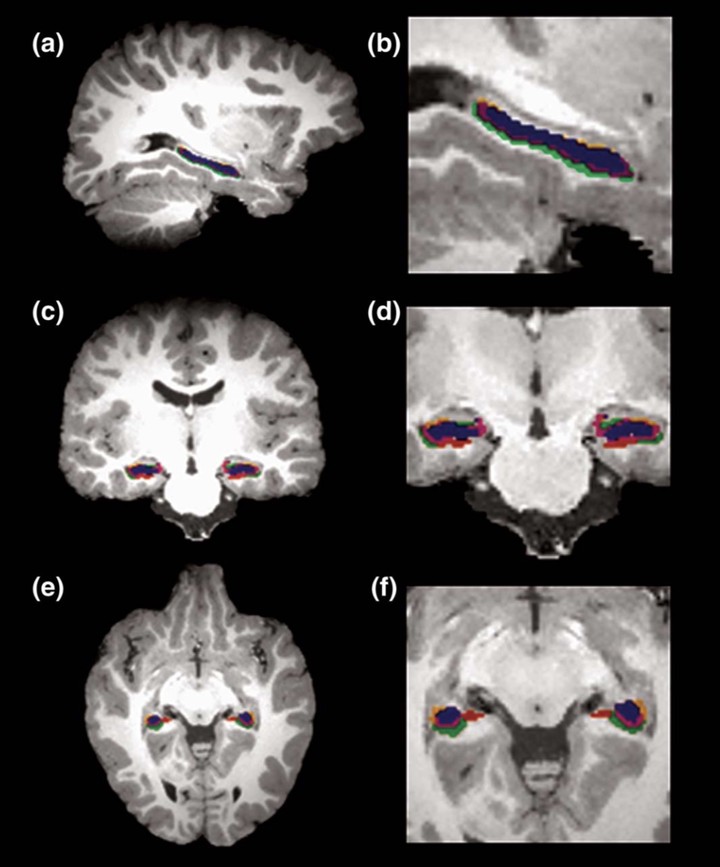Smaller hippocampal subfield volumes predict verbal associative memory in pediatric brain tumor survivors (2017)

Abstract
The developing hippocampus is highly sensitive to chemotherapy and cranial radiation treatments for pediatric cancers, yet little is known about the effects that cancer treatents have on specific hippocampal subfields. Here, we examined hippocampal subfield volumes in 29 pediatric brain tumor survivors treated with cranial radiation and chemotherapy, and 30 healthy developing children and adolescents. We also examined associations between hippocampal subfield volumes and short-term verbal memory. Hippocampal subfields (Cornus Ammonis (CA) 1, CA2-3, dentate gyrus (DG)-CA4, stratum radiatum—lacunosum—moleculare, and subiculum) were segmented using the Multiple Automatically Generated Templates for Different Brains automated segmentation algorithm. Neuropsychological assessment of short-term verbal associative memory was performed in a subset of brain tumor survivors (N = 11) and typically developing children (N = 16), using the Children’s Memory Scale or Wechsler’s Memory Scale—third edition. Repeated measures analysis of variance showed that pediatric brain tumor survivors had significantly smaller DG-CA4, CA1, CA2-3, and stratum radiatum-lacunosum-moleculare volumes compared with typically developing children. Verbal memory performance was positively related to DG-CA4, CA1, and stratum radiatum-lacunosum-moleculare volumes in pediatric brain tumor survivors. Unlike the brain tumor survivors, there were no associations between subfield volumes and memory in typically developing children and adolescents. These data suggest that specific subfields of the hippocampus may be vulnerable to brain cancer treatments, and may contribute to impaired episodic memory following brain cancer treatment in childhood.